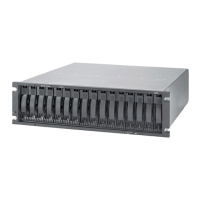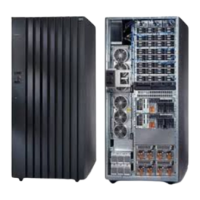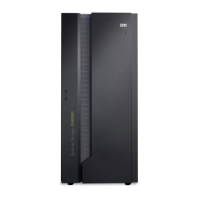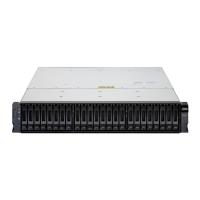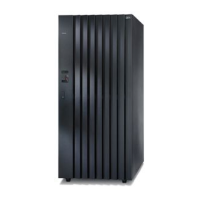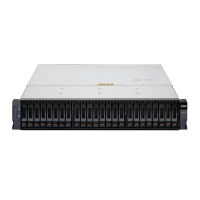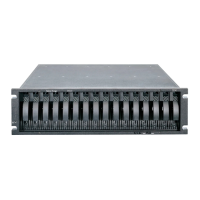Table 12 lists the KVA, watts, and Btu calculations for the DS4800 Storage
Subsystem. These values assume the power supplies have a 73 percent efficiency
and a power factor of 0.99. These tabulated power and heat dissipation values are
typical for the storage subsystem. Maximum configuration units are typically
operated at higher data rates, have larger random access memory (RAM)
capacities, or have different host interface boards.
Table 12. DS4800 Storage Subsystem power and heat dissipation
Parameter KVA Watts (AC) Btu per hour
RAID controller .240 235 803.7
Shock and vibration requirements
Operational shock and operational vibration requirements are shown in this section.
Operational Shock: The DS4800 will be able to withstand the following shock.
Subjecting the equipment to a single shock pulse with the following characteristics
will simulate this level of shock:
v Velocity change = 20 inches per second
v Wave form = Triangular, 10g @3.75 ms
Operational
Vibration (Random): While in its normal operating position, the
DS4800 will continue operating when subjected to a random vibration test using the
criteria shown in Table 13 on page 25. This test uses a dwell time of 15 minutes at
any frequency where vigorous or resonant excitation occurs.
ds48019
Figure 10. DS4800 Storage Subsystem airflow
24 IBM System Storage DS4800 Storage Subsystem: Installation, User’s, and Maintenance Guide
|
|
|
|
|
|
|
|
|
|
|
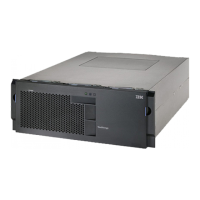
